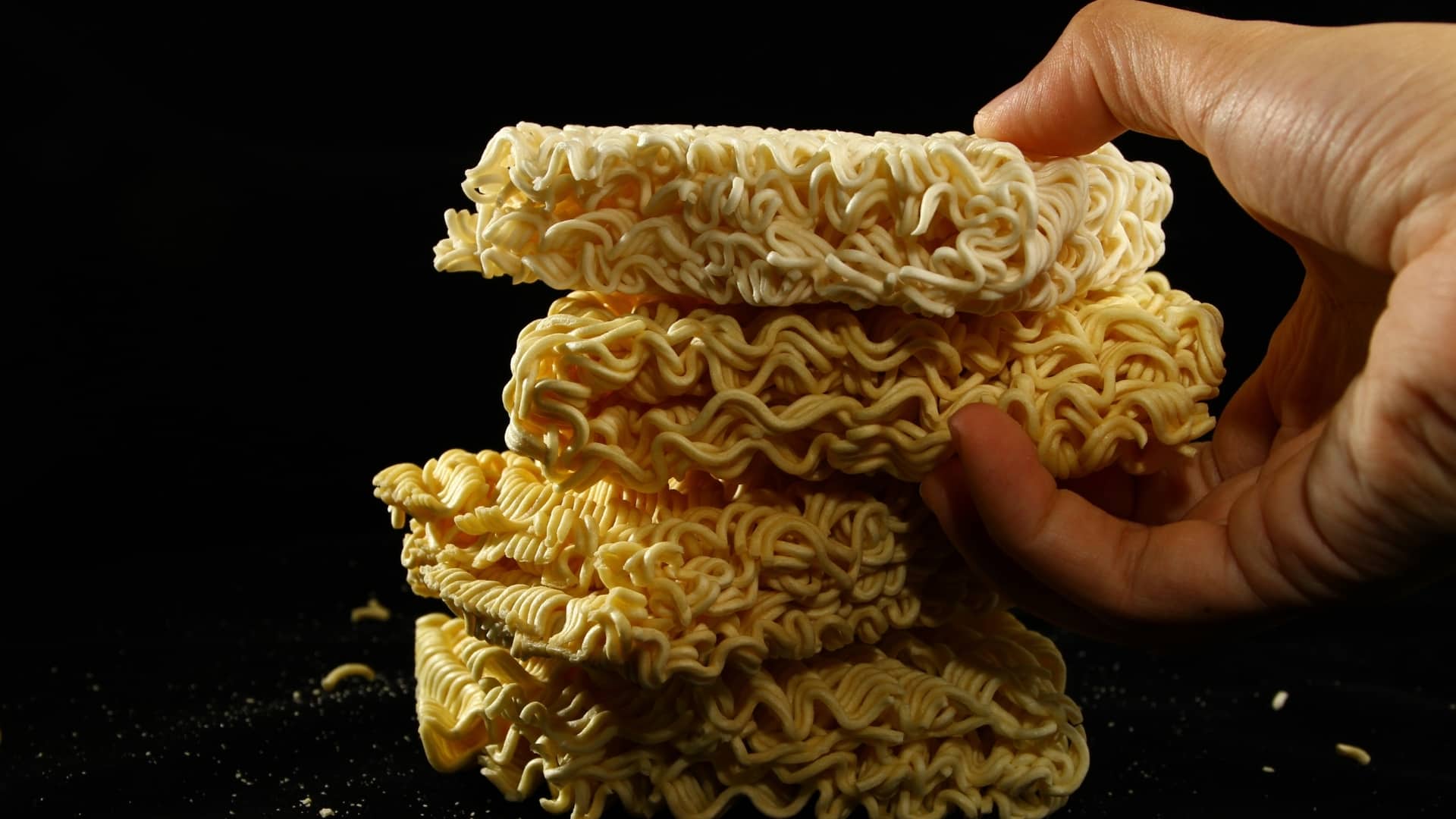Are ramen noodles made of plastic and can they give you cancer?
For over 20 years, there’s been a rumor circulating on the internet about instant ramen. Said rumor states that instant ramen is coated in wax and that the wax can get stuck in your stomach lining.
Not only that, but it says this wax coating can give you cancer. The rumor claims that the reason there’s a wax coating in the first place is to keep the noodles from getting stuck together after they’ve been fried.


Check out our new cookbook
Bitemybun's family recipes with complete meal planner and recipe guide.
Try it out for free with Kindle Unlimited:
Read for freeIn this post we'll cover:
Is the rumor true?
Absolutely not! It’s been confirmed numerous times to be an absolute hoax.
Even manufacturers of instant ramen (like Maruchan) have confirmed this is fake. All ingredients are listed on the back of the package, and due to legal regulations, it’s mandatory to list every ingredient contained in a product.
Food safety experts have also pointed out that fried noodles don’t get stuck together. That isn’t how food works, especially when using oil for frying foods.
What about the package or container?
The hoax also indicates that there’s wax used in the packaging for instant ramen. This is also false.
Even if it was true and a small bit of wax did manage to get onto the instant ramen that you call lunch, it’d simply pass through your body without causing any issues.
That’s how your body handles things it can’t digest, and the same would apply here if there were a wax coating on instant ramen.
If wax were indeed used, then it would be beeswax, which is completely edible for humans. So having beeswax on the noodles or packing wouldn’t have any harmful effects on the person eating the instant ramen.
Also read: ramen vs ramyun vs ramyeon: different or the same?
What about cancer? Does ramen cause cancer?
Well, yes. That’s the only kernel of truth in this ridiculous hoax.
However, cancer isn’t caused by a non-existent wax lining. There are other factors at play that cause ramen to be bad for your health.
First off, instant ramen is overloaded with sodium. While having some sodium in your diet is important, excess sodium increases your risk for heart disease, stomach cancer, and stroke.
Not only that, but instant ramen is a heavily processed food. Heavily processed foods are notorious for having a lot of flavor enhancers and preservatives that are bad for your overall health.
They may make the food taste good and allow it to last longer, but long-term exposure can cause all sorts of issues for you in the long run.
So eating instant ramen noodles regularly is far worse for your health than an imaginary layer of wax coating on ramen noodles.
Get some more info from Dr. Loh Poh Yen:
The importance of fact-checking
Though this hoax has been proven false numerous times throughout the years, it still spreads.
Since there are people who’ll believe any bizarre and outlandish conspiracy theory, it’s very difficult to get a debunked hoax out of the wild once it’s out there. Social media is an echo chamber for false and unverifiable information being thrown around as some secret truth.
In this day and age of technology, it’s important not necessarily to take a vague story at face value.
If someone’s claiming some nameless person died because they had a bunch of wax built up in their stomach from eating ramen, then verify that information before you buy into the scare tactic.
Eat ramen in moderation because of the lack of nutritional value, not because of a baseless hoax.
Check out our new cookbook
Bitemybun's family recipes with complete meal planner and recipe guide.
Try it out for free with Kindle Unlimited:
Read for freeJoost Nusselder, the founder of Bite My Bun is a content marketer, dad and loves trying out new food with Japanese food at the heart of his passion, and together with his team he's been creating in-depth blog articles since 2016 to help loyal readers with recipes and cooking tips.
